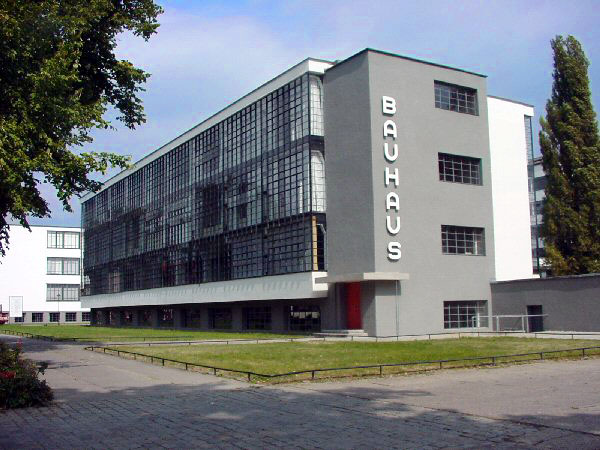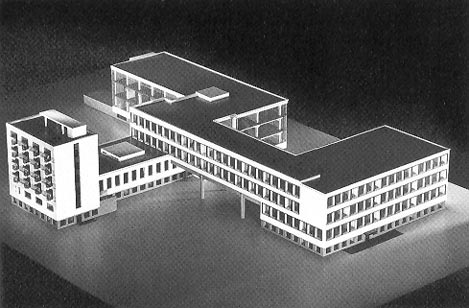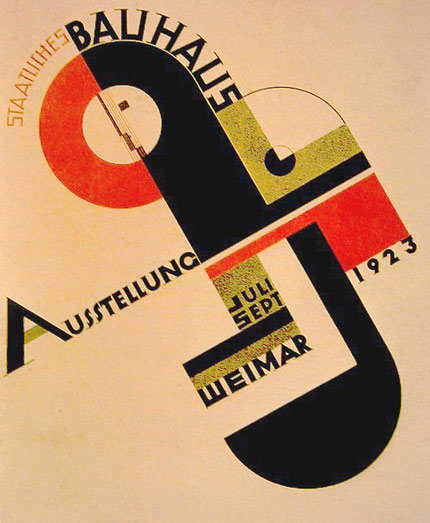
Bauhaus è l'abbreviazione di Staatliches Bauhaus, una scuola di arte e architettura della Germania che operò a Weimar dal 1919 al 1925 e, successivamente a Dessau fino al 1933.
Erede delle avanguardie anteguerra, fu non soltanto una scuola, ma anche il punto di riferimento fondamentale per tutto il movimento d'innovazione nel campo del design e dell'architettura conosciuto come razionalismo, funzionalismo, "architettura moderna" o addirittura "stile Bauhaus".

Bauhaus di dessau
I suoi insegnanti, appartenenti a diverse nazionalità, furono figure di primissimo piano della cultura europea. L'esperienza didattica della scuola influirà profondamente sull'insegnamento artistico e tecnico fino ad oggi.

modello della Bauhaus progettata da Gropius
Più in generale il Bauhaus fu un momento cruciale nel dibattito novecentesco del rapporto tra tecnologia e cultura.
La scuola nacque dalla fusione della Scuola Granducale di Arti Plastiche (Accademia di Belle arti) e della Kunstgewerbeschule (Scuola di artigianato artistico).

Questa origine esemplifica il programma della nuova scuola che voleva riunire arte applicata e architettura. Fondatore e direttore della nuova scuola fu Walter Gropius che era favorevole ad un insegnamento progettuale basato su laboratori sia per quanto riguarda i designer (progettisti) che per gli artigiani (esecutori).
La scuola partì in un clima di grandi difficoltà pratiche nella Germania sconfitta del primo dopoguerra. Proprio a Weimar, negli stessi mesi, fu approvata la costituzione e si insediò il primo governo della repubblica democratica che sarà spazzata via dal nazismo nel 1933.
Gropius fu a capo della scuola per un decennio, fino al 1928, seguito da Hannes Meyer e Ludwig Mies van der Rohe.